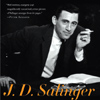Salinger

Timeline
J.D. Salinger Timeline
A Writing Life
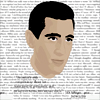
Provided here is a perfunctory timeline of the life of J.D. Salinger that concentrates on his literary career and notes - not only the major events of the author's life from his birth in 1919 to his death in 2010 - but also the construction and publication dates of his better-known works.
"Flume" Bon Iver
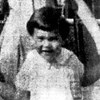 |
Jerome David Salinger is born at New York City's Nursery and Child's Hospital on January 1, to Solomon and Miriam Jillich Salinger. A sister, Doris, had been born in Chicago, 1912. Salinger's father was regional manager for a meat and cheese import company and the son of Jewish immigrants from Russia. His mother, who had changed her name from Marie, had been born in Iowa of German and Irish ancestry. |
|||
The Salingers move to an upscale apartment at 215 West 82nd Street, just blocks from Central Park. Jerome (nicknamed "Sonny") continues on in public school. |
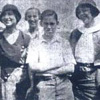 |
|||
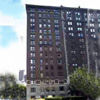 |
The Salinger family moves to 1133 Park Avenue (between 90th & 91st Sts.). Jerome is enrolled in the McBurney School, a private high school on West 63rd Street, where he captains the fencing team and produces mediocre grades. |
|||
| Enters Valley Forge Military Academy, Wayne, Pennsylvania (the obvious basis for Pency Prep.) Works on the school newspaper and yearbook Crossed Sabres. |
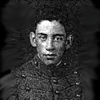 |
|||
 |
Graduates from Valley Forge Military Academy. Enrolls in New York University (Washington Square College). |
|||
| Due to poor mid-term grades, Salinger quits New York University before completing his second semester, forcing him to travel to Europe to study his father's import business. |
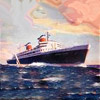 |
|||
 |
Spends time working at a slaughterhouse in Bydgoszcz, Poland and is repulsed by the experience. Lives ten months in Vienna, Austria on the cusp of the Nazi anschluss. Returns home on March 16, begins a brief enrollment at Ursinus College, Pennsylvania, where he writes a column for the school newspaper. |
|||
Attends two semesters of a short story writing course taught by Whit Burnett at Columbia University. Fitzgerald, Lardner, and Saroyan influence his writings. |
 |
|||
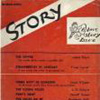 |
Salinger's first short story, "The Young Folks," is published in Whit Burnett's magazine, Story . "Go See Eddie" is published in the Kansas City Revue. In September, Salinger reports he is planning to begin "the novel" that will one day become The Catcher in the Rye. |
|||
| In February, Salinger takes a position on the entertainment staff of the M.S. Kungsholm, touring the Caribbean for nineteen days. Upon leaving the ship, Salinger attempts to join the army but is deferred due to a minor heart irregularity. During the summer, he b egins a romantic relationship with Oona O'Neill, daughter of the playwright Eugene O'Neill. Hires the Harold Ober Agency as his literary agent. Writes and sells "Slight Rebellion Off Madison" to The New Yorker, "The Hang of It" is published by Collier's . "Heart of a Broken Story" is published in Esquire. . |
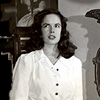 |
|||
 |
War with Japan and Germany. Salinger is drafted into the United States Army and attends Officers, First Sergeants, and Instructors School of Signal Corps in Ft. Monmouth, New Jersey. Applies for admission to Army Officer Candidate School but is sent to the Army Air Force Basic Flying School in Bainbridge, Georgia, where he serves as an instructor. Writes "Last and Best of the Peter Pans." Sells "Paula" to Stag. "The Long Debut of Lois Taggett" is published in Story. "Personal Notes of an Infantryman" is published in Collier's. |
|||
During the summer, Salinger is transferred to Nashville, Tennessee and promoted to Staff Sergeant. Re-stationed to Patterson Field in Fairfield, Ohio and then to Fort Holabird, Maryland. At Fort Holabird, he becomes an agent of the Army Counter-Intelligence Corps. |
 |
|||
 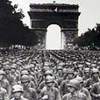 |
In January, Salinger is shipped to Europe and stationed at Tiverton, England, where he continues Counter Intelligence training. |
|||
Takes part in the invasion and occupation of Germany, serving in the Rhineland, in Württemberg, and Bavaria and traveling through territories known to contain camps of the Dachau Concentration Camp System. . |
  |
|||
 |
On May 10, Salinger returns to the United States with Sylvia who soon goes back to Europe and files for divorce. For a time, he joins a trendy, somewhat bohemian crowd, frequenting Greenwich Village bars and cafes. Salinger breaks with Whit Burnett when the editor rescinds a promise to publish a Salinger collection. Finishes and submits original version of The Catcher in the Rye as a 90-page novella. Dissatisfied, withdraws the book and begins to rework it. Writes "The Male Goodbye," "A Girl in 1941 with No Waist At All," and "The Inverted Forest." "Slight Rebellion Off Madison" is finally published by The New Yorker. |
|||
Moves from Manhattan to Westchester County, NY and then to a barn studio in Stamford, Connecticut. |
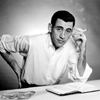 |
|||
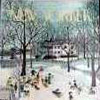 |
Salinger establishes
a strong publishing relationship with The New Yorker and intensifies his studies of eastern religion and philosophy. Publishes the major short stories "A Perfect Day for Bananafish," "Uncle Wiggily in Connecticut," and "Just Before the War with the Eskimos" in The New Yorker. "Blue Melody" is published in Cosmopolitan and "A Girl I Knew" is published in Good Housekeeping. Signs a first-rejection contract with The New Yorker, affording him to move from Stamford to a rented house in Westport, Connecticut. Spends the summer at a lakeside lodge in Wisconsin where he writes "Down at the Dinghy." |
|||
Salinger is invited to lecture at Sarah Lawrence College, Bronxville NY. Self-conscious of his display there, he resigns never again to promote himself in such a way. "The Laughing Man,"is published by The New Yorker and Harpers publishes "Down at the Dinghy". |
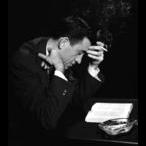 |
|||
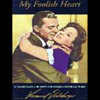 |
In January, t he film version of "Uncle Wiggily in Connecticut," My Foolish Heart, is released by Samuel Goldwyn, starring Susan Hayward and Dana Andrews. Salinger is horrified to see his work maligned by Hollywood. By summer, Salinger has completed The Catcher in the Rye . After his original publishers at Harcourt Brace request that he change it, Salinger withdraws the manuscript and sells it to Little, Brown and Company instead. "For Esmé-with Love and Squalor" is published in The New Yorker. The story is recognized and reprinted in Prize Stories of 1950: The O. Henry Awards. Salinger withdraws "The Ocean Full of Bowling Balls" from Woman's Home Journal and Collier's which bought but never published the story. |
|||
In May, Salinger travels to Great Britain to avoid the tumult of Catcher 's publication. Tours England, Ireland and Scotland and becomes close with his British publisher, Jamie Hamilton. |
  |
|||
 |
Salinger named a "distinguished alumni" by Valley Forge Military Academy but is in Mexico when the award is given. Embraces the tenets of Vedantic faith as expressed in The Gospels of Sri Ramakrishna . The New Yorker rejects "De Daumier-Smith's Blue Period." Salinger publishes the story in London's World Review in May. |
|||
On January 1, Salinger officially moves to Cornish, New Hampshire upon the purchase of ninety acres of hillside property and a desheveled cottage . "Teddy" is published in The New Yorker. The book, Nine Stories is published in April, becoming an instant bestseller. |
 |
|||
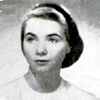 |
Salinger marries Claire Alison Douglas, daughter of British art critic Robert Langton Douglas, on February 17. The couple attempt to live the teachings of Swami Yogananda and become members of the Self Realization Fellowship. A daughter, Margaret Ann, is born on December 10. "Raise High the Roof Beam, Carpenters" and "Franny" are published in The New Yorker. |
|||
After initially rejecting the novella and being overruled by William Shawn, The New Yorker publishes "Zooey" in May. . |
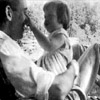 |
|||
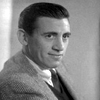 |
Story 's Whit Burnett asks Salinger for permission to publish "A Young Man in a Suffed Shirt" and "The Daughter of the Late, Great Man" but Salinger declines. The New Yorker publishes "Seymour: An Introduction" in June, after Salinger struggled with the novella for eighteen months, falling ill several times in the process. In December, Salinger makes his only public statement on a social issue, defending the notions of penitence and probation in a letter to the editor of the New York Post. |
|||
A son, Matthew , is born on February 13. Salinger breaks with his British publishers, Hamish Hamilton, over their presentation of For Esmé-with Love and Squalor and Other Stories, the British edition of his Nine Stories collection. |
 |
|||
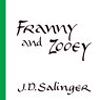 |
Salinger appears on the cover of Time magazine. Franny and Zooey is published in September. The book becomes Number 1 on The New York Times Bestsellers list and Salinger and his family are harassed by reporters who lurk about his home seeking news about the now-famously elusive author. |
|||
Raise High the Roof Beam, Carpenters and Seymour:An Introduction is published. The collection becomes the third best selling book of 1963. Salinger strengthens his friendship with New Yorker head editor William Shawn. |
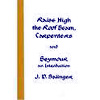 |
|||
 |
Shawn is named godfather for Peggy Salinger, replacing Salinger's friend, the late Judge Learned Hand. Salinger and Shawn are both named godfather for the adopted son of Shawn's mistress, Lillian Ross. |
|||
Salinger's final release, "Hapworth 16, 1924," is published in The New Yorker and recieves a muted response from critics. |
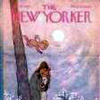 |
|||
| |
After having built and moved into a home apart from his family, Salinger is divorced from Claire Douglas, ending twelve years of marriage. |
|||
Salinger terminates his contract with Little, Brown & Company. At his request, his agent destroys over 100 letters sent by him. |
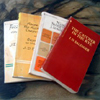 |
|||
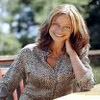 |
After reading an article in The New York Times Magazine, Salinger writes to its author, an 18-year-old student named Joyce Maynard. Maynard soon moves in with Salinger at Cornish and the couple engage a short romance. |
|||
Salinger's parents die. He grants a rare interview to the New York Times explaining his reaction to the publication of a unauthorized collection of his early short stories. Originating from Berkeley, CA and titled " The Complete Uncollected Short Stories of J.D. Salinger Vols. I & II", the pamphlets were likely the product of iconoclastic bookseller Moe Moskowitz. |
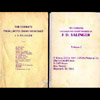 |
|||
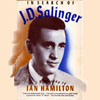 |
Salinger successfully litigates Random House and author Ian Hamilton to prevent the publication of an unauthorized biography on the grounds of copyright infringement. |
|||
. It is revealed that Salinger has married a local nurse named Colleen O'Neill, forty years his junior. |
 |
|||
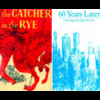 |
Salinger successfully sues to stop the publication of an unauthorized sequel to The Catcher in the Rye. |
|||
On January 27, at age 91, J.D. Salinger died at his home in Cornish, New Hampshire.. |
 |
|||
